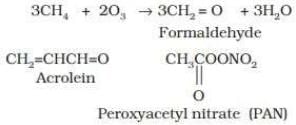Pollution - UPSC MCQ
14 Questions MCQ Test - Pollution
Why is there a great concern about the ‘microbeads’ that are released into environment?
Due to improper / indiscriminate disposal of old and used computers or their parts, which of the following are released into the environment as ewaste?
1) Beryllium
2) Cadmium
3) Chromium
4) Heptachlor
5) Mercury
6) Lead
7) Plutonium
Select the correct answer using the codes given below.
1) Beryllium
2) Cadmium
3) Chromium
4) Heptachlor
5) Mercury
6) Lead
7) Plutonium
Select the correct answer using the codes given below.
| 1 Crore+ students have signed up on EduRev. Have you? Download the App |
Which of the following are some important pollutants released by steel industry in India?
1) Oxides of sulphur
2) Oxides of nitrogen
3) Carbon monoxide
4) Carbon dioxide
Select the correct answer using the code given below.
Excessive release of the pollutant carbon monoxide (CO) into the air may produce a condition in which oxygen supply in the human body decreases. What causes this condition?
Which of the following can be found as pollutants in the drinking water in some parts of India?
1) Arsenic
2) Sorbitol
3) Fluoride
4) Formaldehyde
5) Uranium
Select the correct answer using the codes given below.
Brominated flame retardants are used in many household products like mattresses and upholstery, Why is there some concern about their use?
1) They are highly resistant to degradation in the environment.
2) They are able to accumulate in humans and animals.
Select the correct answer using the code given below.
With reference to ' fly ash' produced by the power plants using coal as fuel, which of the following statements is/are correct?
1) Fly ash can be used in the production of bricks for building construction.
2) Fly ash can be used as a replacement for some of the Portland cement contents of concrete.
3) Fly ash is made up of silicon dioxide and calcium oxide only, and does not contain any toxic elements.
Select the correct answer using the code given below:
In the context of solving pollution problems, what is/are the advantage/advantages of bioremediation technique?
1) It is a technique for cleaning up pollution by enhancing the same biodegradation process that occurs in nature.
2) Any contaminant with heavy metals such as cadmium and lead can be readily and completely treated by bioremediation using microorganisms.
3) Genetic engineering can be used to create microorganisms specifically designed for bioremediation.
Select the correct answer using the code given below:
In the cities of our country, which among the following atmospheric gases are normally considered in calculating the value of Air Quality Index?
1) Carbon dioxide
2) Carbon monoxide
3) Nitrogen dioxide
4) Sulfur dioxide
5) Methane
Select the correct answer using the code given below.
Consider the following;
1) Carbon monoxide
2) Methane
3) Ozone
4) Sulphur dioxide.
Which of the above are released into atmosphere due to the burning of crop/biomass residue?
Consider the following statements:
1) Agricultural soils release nitrogen oxides into environment.
2) Cattle release ammonia into environment.
3) Poultry industry releases reactive nitrogen compounds into environment.
Which of the statement given above is/are correct?


















